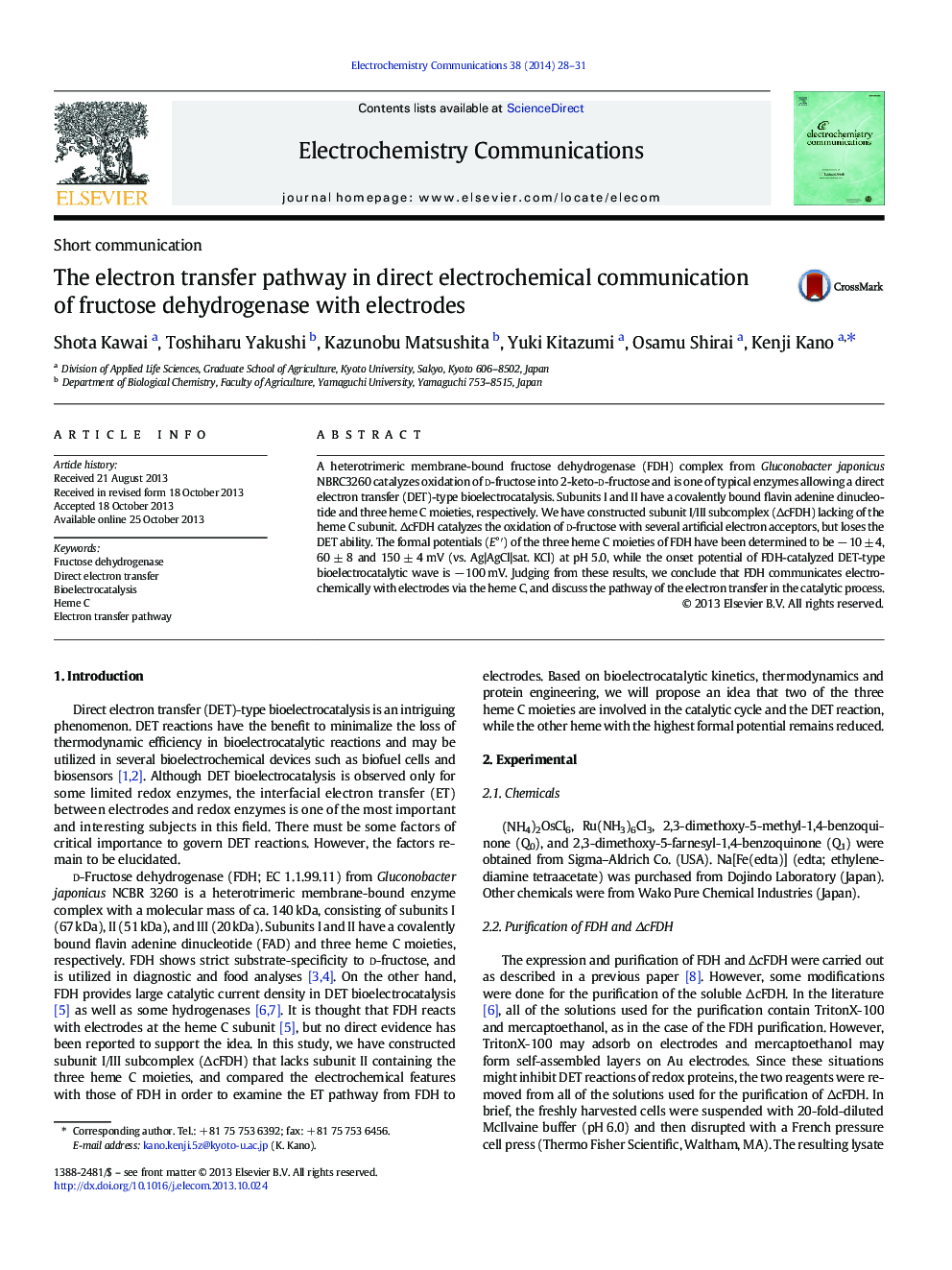| Article ID | Journal | Published Year | Pages | File Type |
|---|---|---|---|---|
| 179215 | Electrochemistry Communications | 2014 | 4 Pages |
•Subunit I/III subcomplex (ΔcFDH) without heme C subunit is constructed.•ΔcFDH shows a high activity to oxidize d-fructose, but loses DET activity.•The formal potentials of the three heme C moieties in FDH have been determined.•FDH has electron acceptor specificity.•The heme C with the highest E°′ does not seem to be involved in DET reaction.
A heterotrimeric membrane-bound fructose dehydrogenase (FDH) complex from Gluconobacter japonicus NBRC3260 catalyzes oxidation of d-fructose into 2-keto-d-fructose and is one of typical enzymes allowing a direct electron transfer (DET)-type bioelectrocatalysis. Subunits I and II have a covalently bound flavin adenine dinucleotide and three heme C moieties, respectively. We have constructed subunit I/III subcomplex (ΔcFDH) lacking of the heme C subunit. ΔcFDH catalyzes the oxidation of d-fructose with several artificial electron acceptors, but loses the DET ability. The formal potentials (E°′) of the three heme C moieties of FDH have been determined to be − 10 ± 4, 60 ± 8 and 150 ± 4 mV (vs. Ag|AgCl|sat. KCl) at pH 5.0, while the onset potential of FDH-catalyzed DET-type bioelectrocatalytic wave is − 100 mV. Judging from these results, we conclude that FDH communicates electrochemically with electrodes via the heme C, and discuss the pathway of the electron transfer in the catalytic process.
Graphical abstractFigure optionsDownload full-size imageDownload as PowerPoint slide
